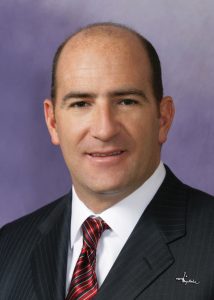Involve your children in philanthropy

Mike Feldman
By Mike Feldman
Over the next few decades, an estimated $30 trillion is expected to pass from baby boomers to their heirs in the biggest wealth transfer in history.
Unfortunately, most family wealth is earned and lost within three generations. Engaging the younger generations in philanthropic efforts is one way to prepare them for future financial responsibilities while passing on your family values of charitable giving.
The best way to involve your children in your philanthropic activities is to start young. Children are keen observers of their parents, so look for opportunities at every age to include them in your family’s giving and volunteer work. The good news is that current generations are already giving of their time and money. In 2014, 84 percent of millennials made a charitable donation and 70 percent spent time volunteering.
Establishing a plan helps maximize the impact of your giving while fostering a culture of philanthropy that will carry on your family’s legacy.
You can start laying the groundwork with these five simple strategies whether you have a family foundation or you are giving in a less formal way:
Document your family’s giving history: Understanding the context, motivations and history of your family’s charitable giving will lead to better engagement in your philanthropic pursuits and helps build passion for family causes. This is especially important in cases of family foundations where younger generations may not have known the founders of the family’s philanthropic traditions.
Create a family mission statement: Many companies create mission and values statements to guide their business practices. Developing family mission statements can be equally valuable. Work with your children to define your mission and purpose for giving. Then use your mission statement to outline the principles and behaviors that will guide your charitable giving. Make sure your statement is meaningful to your family and include your family’s giving history to provide context and historical perspective.
Include heirs in the philanthropic work: Regardless of your level of giving, engage younger members by involving them in volunteer work and decision making as early as possible. One family purchased school supplies and worked together to assemble back-to-school kits. The children were allowed to decide where to donate the backpacks and helped deliver them. These activities also build critical thinking and leadership skills. If you have a family foundation with a formal board, invite college-age or young professional family members to join the board. More experienced members can act as mentors and help the others learn about your foundation. This will allow you to see where professional development may be needed to prepare them for a larger role in the future.
Allow heirs to direct philanthropic funds: Challenge your children to choose a cause they are passionate about. Encourage them to research charitable organizations and to develop a plan focused on how they will use donation dollars. Tap into websites such as Guidestar.org and Charitynavigator.org to compare charities based on governance, overhead and the percentage of donations that go to the cause. Then come together as a family to discuss each charity’s merits to determine where to donate your funds.
Make these meetings a regular part of family life: Include younger family members as early as possible, and be open to causes and goals that your family’s younger generations bring to the table.
There are a number of ways to give, including volunteering, donating directly to charitable organizations, family foundations or donor-advised funds.
Working with an experienced estate planning attorney, tax adviser, and a wealth strategist will help you understand the benefits and limitations of each strategy which, in turn, can better focus your resources to drive your philanthropic causes and optimize your giving.
Arranging your family’s philanthropic activity will take some time and effort, but working together can instill your family values in the next generation and provide an introduction into a greater conversation about family wealth and stewardship.
• Mike Feldman is head of the Wealth Markets Group of Union Bank.












